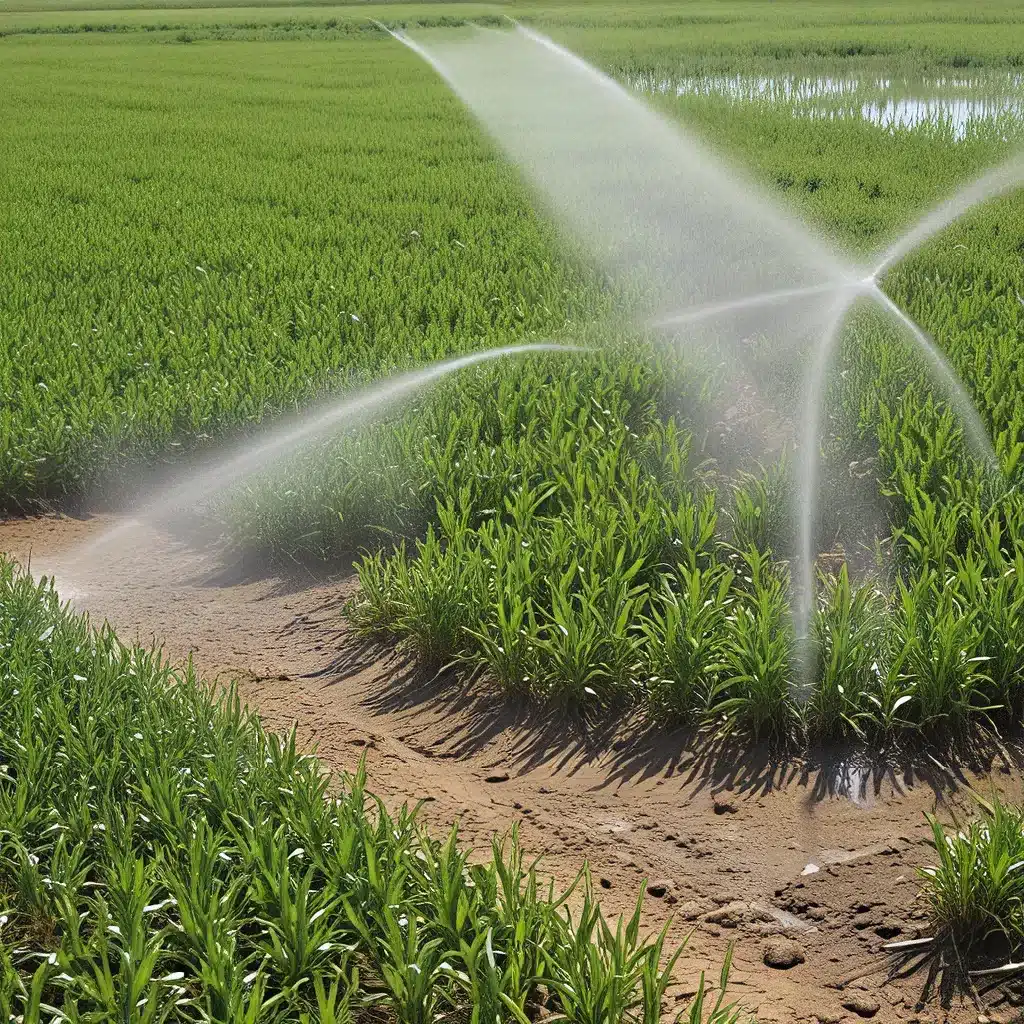
The Thirsty Realities of Farming
As I gaze out over the vast expanse of golden wheat fields, I can’t help but wonder – how on earth do our farmers manage to keep these crops thriving in the face of dwindling water supplies? It’s a daunting challenge, one that is only growing more pressing with each passing year.
Let’s face it, water is the lifeblood of agriculture. Globally, farming accounts for a staggering 70% of all freshwater usage. Just imagine – every time you take a sip of water, you’re tapping into the same precious resource that grows the food on your plate. It’s a sobering thought, and one that should make us all profoundly grateful for the hard work and ingenuity of our agricultural community.
But as climate change and population growth continue to strain our water resources, farmers are finding themselves in an increasingly precarious position. Droughts and water scarcity are taking a heavy toll, with crop yields plummeting in many regions. In the water-scarce Colorado River states of the southwest, over 5 million acres are still being flooded with outdated irrigation methods – a staggering waste of precious resources.
Irrigation Innovations to the Rescue
Thankfully, the tides are starting to turn. A new wave of innovative irrigation technologies is poised to revolutionize the way we grow our food, offering farmers practical and economical solutions to combat water scarcity.
One such innovation is gravity-powered micro-irrigation. This game-changing system utilizes the existing infrastructure of flood-irrigated fields, applying water through drip irrigation tubing without the need for energy-guzzling pumps and filters. By harnessing the power of gravity, these systems can save up to 50% of the water currently used in flood-irrigated fields, while also increasing crop yields and reducing the use of polluting fertilizers. Talk about a win-win-win!
But gravity-powered micro-irrigation is just the tip of the iceberg. Other precision irrigation technologies, like center pivot and pressurized drip irrigation, are also making waves in the industry. These systems offer improved water and nutrient application, reduced labor costs, and the potential for higher yields – all while using water more efficiently than traditional flood irrigation.
Table: Comparing Irrigation Technologies
| Technology | Water Savings | Yield Potential | Upfront Costs | Energy Needs |
|---|---|---|---|---|
| Flood Irrigation | N/A | Average | Low | Low |
| Center Pivot | 10-20% | Moderate | High | High |
| Pressurized Drip | 30-50% | High | Very High | Very High |
| Gravity-Powered Micro | 50%+ | High | Moderate | Low |
The numbers don’t lie – these innovative irrigation solutions are transforming agriculture from a thirsty endeavor into a sustainable one. And the best part? They’re not just for high-value crops anymore. Farmers of all stripes, from alfalfa to rice, are finding that these technologies can be a game-changer for their operations.
Precision Farming: The Future is Now
But irrigation is just one piece of the puzzle. The future of sustainable agriculture also lies in the realm of precision farming, a holistic approach that leverages the latest technological advancements to optimize every aspect of crop production.
Imagine a world where sensors and drones constantly monitor your fields, providing real-time data on soil moisture, nutrient levels, and pest infestations. Where autonomous tractors and harvesters can precisely apply water, fertilizers, and pesticides – only where and when they’re needed. This isn’t some far-fetched sci-fi fantasy – it’s happening right now, and it’s transforming the way we grow our food.
At the forefront of this revolution are innovative farmers who are embracing precision agriculture techniques to reduce water consumption, cut back on chemical inputs, and boost their yields. By precisely targeting their resources, they’re able to achieve remarkable results – all while minimizing their environmental footprint.
Cultivating a Sustainable Future
As I contemplate the challenges facing our agricultural sector, I can’t help but feel a sense of cautious optimism. The solutions are out there, and they’re being embraced by forward-thinking farmers across the globe. But the road ahead is not without its obstacles.
Widespread adoption of these innovative irrigation and precision farming technologies will likely require a concerted effort on the part of policymakers, researchers, and industry leaders. We need to overcome barriers like high upfront costs, complex implementation, and entrenched cultural biases. It’s a daunting task, but one that is essential if we are to cultivate a truly sustainable water future.
One thing’s for certain – the future of agriculture is hanging in the balance, and the stakes couldn’t be higher. But with the ingenuity and perseverance of our farming communities, I believe we can rise to the challenge. After all, the very survival of our planet and our species depends on it.
So let’s roll up our sleeves, dig deep, and get to work. The water-wise, high-yielding farms of tomorrow are just within our reach. All it takes is the courage to embrace a new era of innovation and sustainability.


